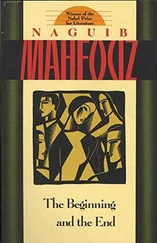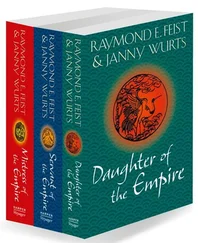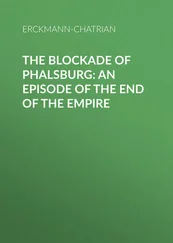Chalmers Johnson - The Sorrows of Empire - Militarism, Secrecy, and the End of the Republic
Здесь есть возможность читать онлайн «Chalmers Johnson - The Sorrows of Empire - Militarism, Secrecy, and the End of the Republic» весь текст электронной книги совершенно бесплатно (целиком полную версию без сокращений). В некоторых случаях можно слушать аудио, скачать через торрент в формате fb2 и присутствует краткое содержание. Год выпуска: 2003, ISBN: 2003, Издательство: Macmillan, Жанр: Старинная литература, на английском языке. Описание произведения, (предисловие) а так же отзывы посетителей доступны на портале библиотеки ЛибКат.
- Название:The Sorrows of Empire: Militarism, Secrecy, and the End of the Republic
- Автор:
- Издательство:Macmillan
- Жанр:
- Год:2003
- ISBN:9780805077971
- Рейтинг книги:4 / 5. Голосов: 1
-
Избранное:Добавить в избранное
- Отзывы:
-
Ваша оценка:
- 80
- 1
- 2
- 3
- 4
- 5
The Sorrows of Empire: Militarism, Secrecy, and the End of the Republic: краткое содержание, описание и аннотация
Предлагаем к чтению аннотацию, описание, краткое содержание или предисловие (зависит от того, что написал сам автор книги «The Sorrows of Empire: Militarism, Secrecy, and the End of the Republic»). Если вы не нашли необходимую информацию о книге — напишите в комментариях, мы постараемся отыскать её.
The Sorrows of Empire: Militarism, Secrecy, and the End of the Republic — читать онлайн бесплатно полную книгу (весь текст) целиком
Ниже представлен текст книги, разбитый по страницам. Система сохранения места последней прочитанной страницы, позволяет с удобством читать онлайн бесплатно книгу «The Sorrows of Empire: Militarism, Secrecy, and the End of the Republic», без необходимости каждый раз заново искать на чём Вы остановились. Поставьте закладку, и сможете в любой момент перейти на страницу, на которой закончили чтение.
Интервал:
Закладка:
The main public intent behind foreign military training today is the recruitment of more foot soldiers in the war on terrorism and their preparation for joint operations with American units. Among the hidden motives behind such programs is finding surrogates for American troops in order to avoid casualties that might roil the “homeland.” Ever since 1993, when the dragging of the body of Sergeant Randy Shughart through the streets of Somalia’s capital, Mogadishu, was televised, causing President Clinton to withdraw our forces from the country four days later, the Pentagon has tried to avoid anything that would turn the public against its plans. As President Bush said in a speech on March 11, 2002, “We will not send American troops to every battle, but America will actively prepare other nations for the battles ahead.” 5
Troop trainers are often sent abroad—ostensibly to learn foreign languages and familiarize themselves with exotic cultures—in order to circumvent congressional bans on official contacts with countries that have bad human rights records. The Pentagon finds it convenient to train foreign military forces and police to carry out secret programs of state terrorism, including the assassination of foreign leaders, without being charged with war crimes and violations of the Geneva Conventions. 6Foreign military training is also a way to buy political influence. For example, the United States spends $12,000 a year training the military forces of the tiny Pacific island nation of Tuvalu. In return, Tuvalu was one of only four countries that joined the United States and Israel in voting against an October 2000 U.N. General Assembly resolution condemning Israel for its indiscriminate use of force in Palestine.
The United States has two alternative ways of implementing its training programs, each with different unintended consequences. Both have long-standing precedents in the practices of the British Empire, of which the United States has become a dutiful if not particularly inspired pupil. I call these the “sepoy strategy” and the “private military companies strategy.” The word sepoy probably derives from the Urdu word for “horseman” or “soldier,” and the sepoy strategy once involved training “native” troops to serve in regiments commanded by British officers or in imperial Indian regiments thought to be loyal to the British crown, which were normally composed of Sikh and Gurkha mercenaries. In 1857, at the time of the Sepoy Mutiny—which Indian nationalists call their “first war of independence”—Britain deployed an army of 300,000 soldiers in India, 96 percent of whom were sepoys. The fact that, when push came to shove, they proved not to be loyal to Britain highlights one of the major potential pitfalls of this approach.
The classic American example of the employment of sepoys was in the “secret war” in Laos that stretched from 1960 to 1975. Army Green Berets and the CIA supplied clandestine aid to French-trained General Vang Pao of the Laotian army, who, in turn, recruited a 30,000-strong army of Hmong tribesmen to fight the Pathet Lao Communist forces allied with North Vietnam. Vang Pao became a hero to American strategists in Saigon and Washington—the best puppet we ever found in Indochina. Our most important form of aid to him was air power. We backed the Hmong fighters with bombing missions from our bases in Thailand. We also used the CIA’s private airline, Air America, to supply the scattered Hmong villages with arms, rice, and other supplies and then transported their main cash crop, opium, to Vang Pao’s headquarters in the Plain of Jars. From there the opium went on to supply American troops fighting in Vietnam and, via underworld traffickers, on to the international market.
When, after 1969, the Pathet Lao began to defeat the Hmong guerrillas, Air America evacuated thousands of them to refugee camps under Vang Pao’s control and carpet-bombed the Hmong villages that had been overrun. Ultimately, after the collapse of anti-Communist resistance throughout Indochina, the CIA evacuated Vang Pao and thousands of his supporters to the United States, where they now live. Unlike Britain’s sepoys, Vang Pao and the Hmong always remained loyal to the CIA. As Alfred McCoy, the leading authority on the opium trade that accompanied this secret war, notes, “While the U.S. military sent half a million troops to fight a conventional war in South Vietnam, this mountain warfare required only a handful of American personnel.” 7
The private military companies strategy is typified by the Vinnell Corporation of Fairfax, Virginia, a subsidiary of the large defense conglomerate Northrop Grumman. Vinnell was created by retired American military officers and, since 1975, has been licensed by the government to train the Saudi National Guard, the 100,000-strong force that protects the monarchy and serves as a counterweight to any threat from the regular armed forces. Over the years Vinnell has constructed, run, written doctrine for, and staffed five Saudi military academies, seven shooting ranges, and a health care system, while training and equipping four Saudi mechanized brigades and five infantry brigades. Saudi Arabia has, in turn, funneled hundreds of millions of dollars into major defense corporations to equip these forces, which briefly saw action in the first Gulf War by recapturing the Saudi town of Khafji, on the Kuwait border, from the Iraqis. 8
Vinnell is one of about thirty-five private rent-a-trainer, rent-amercenary, and rent-a-cop companies whose leaders and employees, mostly retired high-ranking officers and members of the Special Forces, hire themselves out to the government and its foreign allies to perform any number of military tasks, including troop training. Since these companies are private contractors, they are not subject to military discipline and their operations remain the proprietary secrets of the companies, not subject to any form of public oversight. From the 1950s to the 1970s, the British and South Africans created similar companies of mercenaries to train and sometimes fight alongside both governmental and insurgent forces in the Middle East, Angola, and Sierra Leone. The United States also hired private companies to train South Vietnamese military forces and police during the 1960s and 1970s, but to little avail. I will return to the American private companies below, but let us first consider our record with sepoys.
IMET was created in 1976 in the wake of the Nixon Doctrine, that forlorn attempt to “Vietnamize” the Vietnam War—that is, to shift to the principle that “Asian boys should fight Asian wars.” IMET’s primary mode of operation was—and remains—to pay foreign officers and soldiers to take courses at such places as the National Defense University in Washington, DC; the U.S. Army Intelligence Center at Fort Huachuca, Arizona; the Naval Special Warfare Center (headquarters of the SEALs) at Coronado, California; the Inter-American Air Force Academy at Lackland Air Force Base, San Antonio, Texas; the Air Force Special Operations Command’s school at Hurlburt Field, Fort Walton Beach, Florida; and the John F. Kennedy Special Warfare Center at Fort Bragg, North Carolina.
By far the most notorious of these institutions is the Spanish-language School of the Americas (SOA), which, to evade a congressional order that it be closed, in 2000 renamed itself the Western Hemisphere Institute for Security Cooperation (WHISC). This ruse, which fooled no one, nonetheless formally stopped the movement to abolish SOA. Founded in 1946 and situated in the then American colony of the Canal Zone, it was evicted in 1984 by the Panamanian government, whose president, Jorge Illueca, termed it the “biggest base for destabilization in Latin America.” SOA/WHISC is now located on the grounds of the army base at Fort Benning, Georgia. Over the years it has trained well over 60,000 Latin American military and police officers, significant numbers of whom have been implicated in cases of torture, rape, massacre, and assassination. Among them was Roberto D’Aubuisson, the leader of El Salvador’s right-wing death squads. Lower-level SOA graduates have participated in human rights abuses that include the March 24, 1980, assassination of El Salvador’s Archbishop Oscar Romero (in which the CIA may have been implicated) and the December 1981 El Mozote massacre of 900 Salvadoran civilians. As of late 2002, civil war-torn Colombia’s army includes some 10,000 SOA/WHISC graduates.
Читать дальшеИнтервал:
Закладка:
Похожие книги на «The Sorrows of Empire: Militarism, Secrecy, and the End of the Republic»
Представляем Вашему вниманию похожие книги на «The Sorrows of Empire: Militarism, Secrecy, and the End of the Republic» списком для выбора. Мы отобрали схожую по названию и смыслу литературу в надежде предоставить читателям больше вариантов отыскать новые, интересные, ещё непрочитанные произведения.
Обсуждение, отзывы о книге «The Sorrows of Empire: Militarism, Secrecy, and the End of the Republic» и просто собственные мнения читателей. Оставьте ваши комментарии, напишите, что Вы думаете о произведении, его смысле или главных героях. Укажите что конкретно понравилось, а что нет, и почему Вы так считаете.











